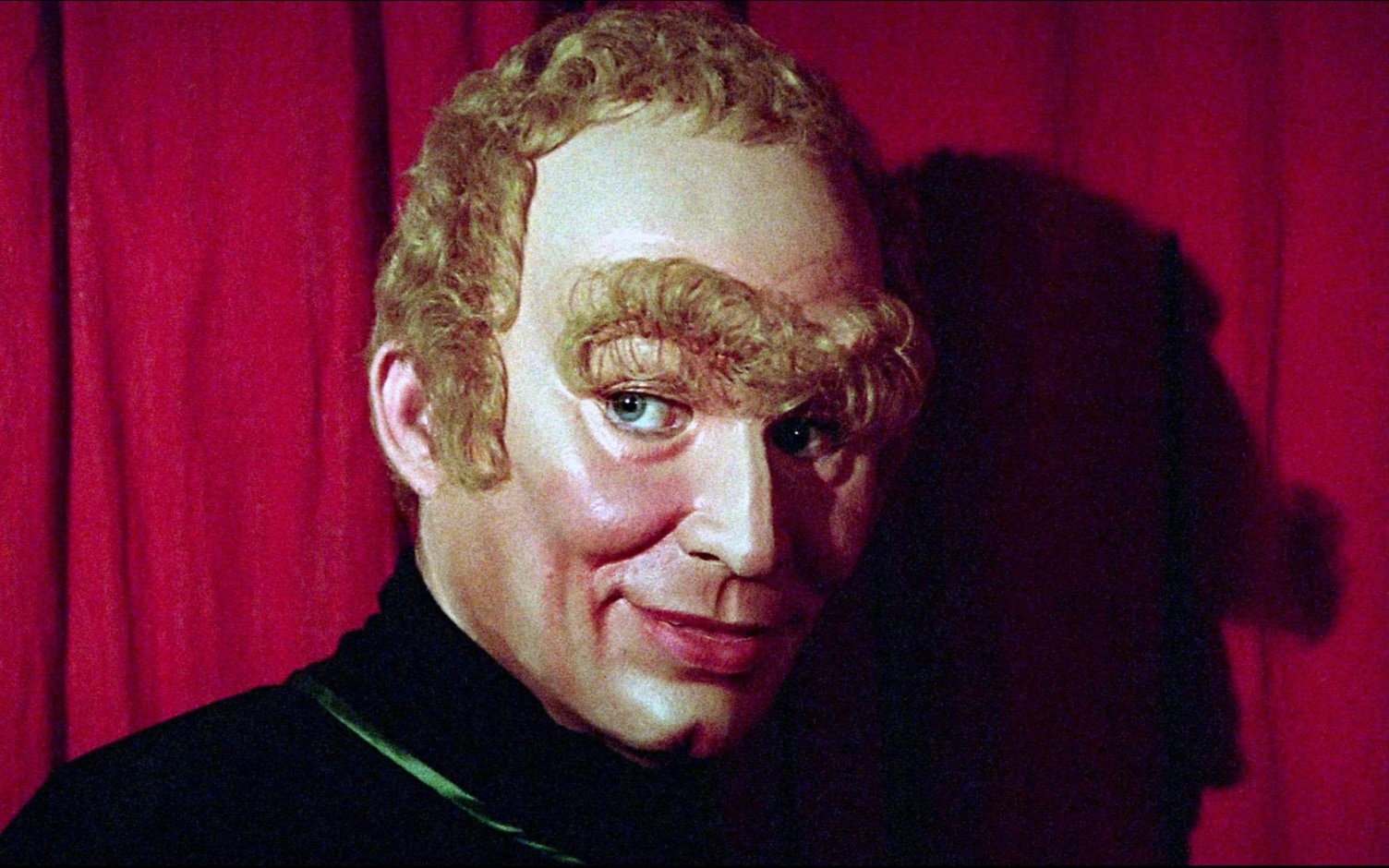L’assassino ha riservato nove poltrone (The Killer Reserved Nine Seats), directed by Giuseppe Bennati in 1974. A distinctive entry in the Italian giallo genre, blending elements of horror, thriller, and gothic mystery. Known for its suspenseful plot, eerie setting, and stylish visual design, the film stands out as a lesser-known but compelling example of Italian 1970s cinema. While giallo often leans heavily into crime and psychological thrillers, the movie incorporates elements of haunted house horror, making it a unique hybrid that draws on gothic tropes while delivering the tension and mystery expected of a giallo.
Plot Overview: A Deadly Game in a Haunted Theater
The plot centers around Patrick Davenant, a wealthy aristocrat who invites a group of friends to his old, theater, under the guise of a social gathering. However, the reunion quickly turns deadly as the guests discover that they are trapped in the theater and begin to be murdered one by one by a mysterious killer. With limited exits and a mounting body count, the group must try to survive while unraveling the identity of the killer who seems to have a personal vendetta.
The film cleverly keeps the audience guessing, maintaining a balance of tension and suspense throughout. Each death is gruesome and elaborate, adding to the horror element while simultaneously serving as a puzzle for the remaining characters and viewers to piece together. The killer’s motives slowly reveal themselves through a combination of flashbacks and character revelations. Adding layers to the story that keep the audience engaged until the final act. Bennati’s direction skillfully weaves suspense, using the isolated, darkened theater as a confined space where no one feels safe.
The Setting: A Theater Turned Haunted House
The theater setting is one of the film’s most intriguing elements, blending gothic atmosphere with the aesthetics of a grand, decaying opera house. Bennati takes advantage of the theater’s architecture—its dimly lit hallways, baroque interiors, and shadow-filled corners—to create an unsettling and claustrophobic atmosphere. The theater itself feels like a character in the story, its decaying opulence symbolizing the secrets and resentments that the characters have long buried.
The choice of setting also serves as an homage to Italy’s historic fascination with operatic drama and visual grandeur. With heavy red drapes, high balconies, and vintage décor, the abandoned theater provides a chilling yet beautiful backdrop for the unfolding horror. The theater’s isolation, cut off from the outside world, amplifies the sense of entrapment felt by the characters and heightens the tension with every shadow and footstep. This environment provides a rich, atmospheric layer to the story, making the viewer feel as though they, too, are trapped within its darkened walls.
Giallo Tropes and Gothic Influences
The plot takes cues from traditional murder mysteries, but with a darker, supernatural edge. Making the viewer question whether something otherworldly may be at play. The film’s atmosphere recalls the works of Edgar Allan Poe and the darkly psychological thrillers of Alfred Hitchcock. Blending Italian horror with a gothic sensibility that sets it apart from more straightforward gialli.
Common giallo motifs are present, including the masked killer, elaborate murders, and a cast of morally ambiguous characters, each with their own secrets and motives. However, Bennati twists these conventions by introducing a sense of the uncanny, hinting at paranormal elements. As the killer seems almost omniscient in their knowledge of the victims’ actions. This supernatural edge, coupled with the confined theater setting, makes the movie more suspenseful and unsettling, as the characters are left to wonder if there is more at work than a mere mortal killer.
The Cast: Strong Performances in a Dark Ensemble
The film boasts a talented cast, with lead roles played by Italian cinema regulars such as Rosanna Schiaffino, who stars as the mysterious and alluring Lynn Davenant. Schiaffino’s portrayal adds depth to her character, providing a balance between vulnerability and strength. Her performance is both captivating and unsettling, fitting perfectly with the film’s gothic atmosphere.
Hubert Noël, playing Patrick Davenant, brings a sinister charm to his role as the affluent host who may have ulterior motives. Noël’s performance as the seemingly calm but possibly malicious Patrick adds to the uncertainty, giving the audience reason to suspect his character. The supporting cast includes seasoned actors like Paola Senatore, Lucretia Love, and Edoardo Toniolo. Each adding intrigue and suspicion to the ensemble as they all become potential victims and suspects. The cast’s chemistry heightens the film’s sense of paranoia, as characters struggle to trust one another while a killer lurks in their midst.
Visual Style and Cinematography
The film’s visual style is a significant part of its appeal, relying heavily on chiaroscuro lighting, richly colored set pieces, and close-ups that capture the characters’ fear and suspicion. Cinematographer Giuseppe Aquari uses shadows and framing to amplify the claustrophobic feel of the theater and build suspense. The close-ups are particularly effective in capturing the terror on each character’s face, while wide shots of the darkened theater create an eerie atmosphere that makes viewers feel as though they are watching a ghost story unfold.
Bennati’s direction emphasizes the film’s gothic tone through its stylized violence and haunting visuals. Each murder is framed in a way that showcases both the theater’s architectural beauty and its menacing aura. The killer’s movements, often obscured by shadows or masked in silhouette, enhance the mystery, creating a dreamlike yet chilling aesthetic that lingers in the mind.
Reception and Legacy
L’assassino ha riservato nove poltrone may not be as widely known as other Italian giallo films, but it has garnered a cult following over the years. The film’s originality lies in its fusion of giallo suspense with supernatural themes, making it a standout in Giuseppe Bennati’s filmography. Though it did not achieve the international recognition of contemporaries like Dario Argento’s Deep Red or Mario Bava’s Blood and Black Lace, it has a loyal fanbase that appreciates its eerie setting, inventive kills, and engaging plot twists.
Critics and fans of the giallo genre regard L’assassino ha riservato nove poltrone as an underrated gem. Notable for its stylistic choices and its willingness to experiment within the genre. Its haunting atmosphere, strong performances, and gothic visuals have made it a classic among giallo enthusiasts and a memorable entry in Italian horror cinema.
Watch the movie on Movieitaly+
Read more articles over here!






